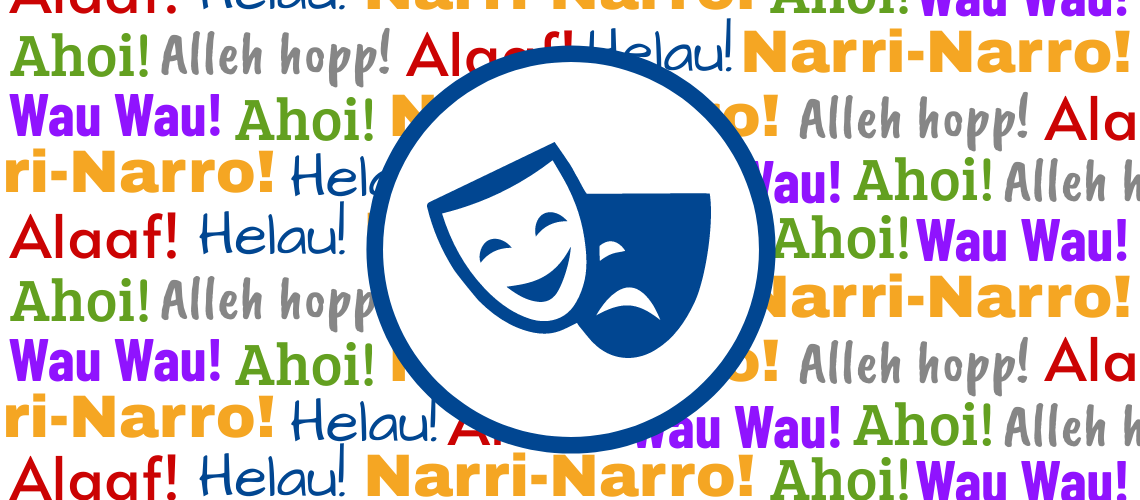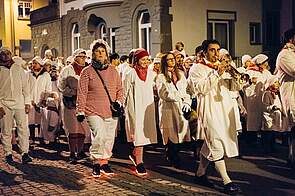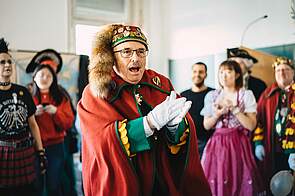
🥳 Alaaf, Helau and Narri Narro - Carnival in Germany
In winter, many regions in Germany celebrate carnival, also called Fastnacht or Fasching. But what actually happens during that time? We will explain the most important customs of the "närrische Zeit" (clownish time) in Germany.
The carnival season is so important to some that they call it "the fifth season". In fact, the “närrische Zeit" already begins in November, namely on the eleventh of the eleventh month at the eleventh minute of the eleventh hour (11.11. at 11:11 a.m.). In regions where carnival is held, carnival events take place regularly from this time onwards. The climax of the carnival takes place six weeks before Easter. The celebrations look very different in different regions. Two of our locations are in so-called "carnival strongholds" (cities where carnival is celebrated in a particularly grand scale) Cologne and Radolfzell.
🤡 Carnival customs
Those who are not familiar with carnival are very surprised when the otherwise sometimes serious Germans suddenly sing and dance in the streets dressed up as Pippi Longstocking or as the Minions. Dressing up is an important part of carnival and you often see very beautiful and elaborately made costumes. If you want to participate without much effort, buy some striped socks, a red clown nose and face paints. In addition, find the most colorful clothes possible from the closet and the clown costume is complete!
Carnival is celebrated in kindergartens, schools and also at workplaces, but often only on a specific day. In Cologne, for example, this is "Weiberfastnacht", the Thursday on which the Straßenkarneval (street Carnival) officially begins. But it is also celebrated in so-called sessions. These are hall events with a stage program, a bit like in the theater. A central component of the meetings are Büttenreden. These speeches are usually rhymed like a poem and they are delivered from a lectern ("Bütt").
*Carnival takes place on the streets, especially in the strongholds. In carnival parades, disguised groups walk through the city, make music, sing and celebrate.
🎉 Carnival in Cologne - Kölle Alaaf!
The Cologne Carnival is world famous. The Rosenmontag (Rose Monday) parade is televised everywhere in Germany and also abroad. Even though Rosenmontag is not an official holiday, hardly anyone in Cologne works on the day. "Kölle Alaaf!" is the Cologne carnival cry that can be heard everywhere during Carnival.
The street carnival begins on Weiberfastnacht ("Weib" is an old word for "woman"), the Thursday before Rosenmontag. Women are allowed to cut off men's ties on this day. So do not be surprised if you see many men with a cut tie on this day!
Between Weiberfastnacht and Carnival Tuesday, many different carnival parades go on in Cologne's "Veedeln" (which is the name of the different quarters of the city). On the six days of the street carnival in Cologne you will see many people dressed up, watching the parades and then celebrating together in pubs. Typical German carnival music is played there, which of course everyone can sing along to.
In our video you can see, how Carnival is celebrated in Cologne (without the pandemic, of course 😉)
🎊 Fasnet in Radolfzell - Narri, Narro!
At Lake Constance, the fifth season is called "Fasnet". The street carnival in Radolfzell already starts on Wednesday before Rose Monday with the "Hemdglonkerumzug". Everyone is allowed to join this procession, you just have to put on a white nightgown and make a lot of noise, for example with pot lids. The noise is supposed to drive away the (evil) winter spirits. Important is the Radolfzell Carnival cry "Narri, Narro!", which is shouted in turn: if someone calls you "Narri", you call back "Narro".
The Fasnet highlight in Radolfzell is “Schmotzige Dunschtig”, the Thursday before Rosenmontag. The carnival groups come to the schools, including the Carl Duisberg Training Center, and free the students from classes. Afterwards, they celebrate first here in the language school and in the afternoon on the street. An important element in Radolfzell is the fool's tree decorated with colorful ribbons, which is erected on “Schmotziger Dunschtig” in the market square.
😥 End of the Carnival
The celebrations end on Ash Wednesday, two days after Rosenmontag. In many regions, including both Cologne and Radolfzell, a large straw doll (called the "Nubbel") is burned during the night of Ash Wednesday. This doll is supposed to take away all the sins committed during the carnival days. Ash Wednesday marks the beginning of the Christian season of Lent, which lasts until Easter. This is possibly where Carnival got its name: The Latin “carne vale” translates roughly as "farewell - meat".


